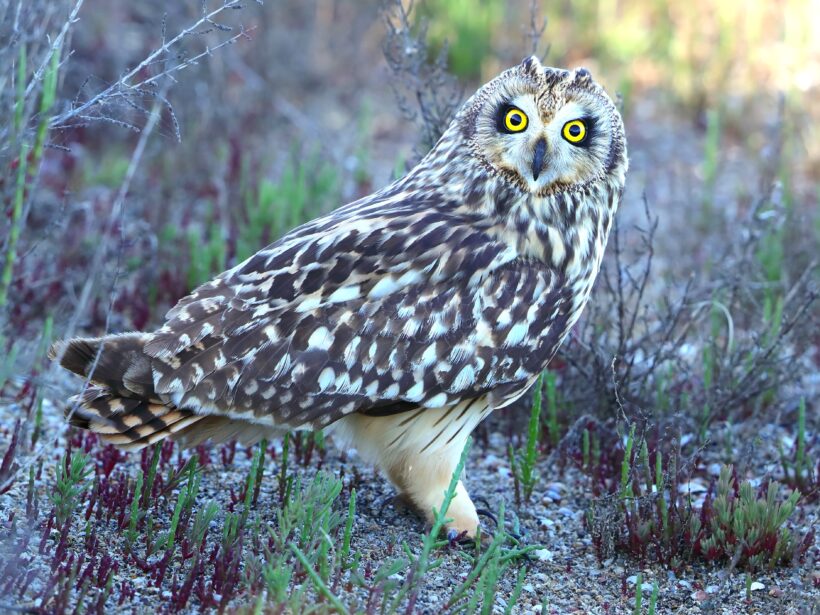Asio flammeus
France is home to 40-120 breeding pairs of short-eared owls, which are partial migrants. Overwinterers from the migratory populations of northern and eastern Europe arrive in autumn and frequent the open environments (moors, salt meadows, dunes and coastal pastures) of the French coast, where they mainly hunt migrating birds and rodents. Many short-eared owls are seen every year on the Breton islands, indicating that they travel by sea. Some individuals winter in France, while others continue on to wintering sites further south on the Iberian Peninsula or in North Africa. The species is fairly nomadic outside the breeding season, dictated by the abundance of prey. And even during the breeding season, owls tracked by GPS-PTT in Scotland proved to be highly mobile, with one female breeding twice in the same year, first in Scotland, then in Norway, crossing vast stretches of sea.
Short-eared owls are captured in autumn, during migration or in winter on sites such as dunes and Breton moors that are ideal for prey hunting. They are captured at night using vertical nets and attracted by the sounds of small mammals and migrating passerines (larks, pipits). They are equipped with a 10g OT10 beacon mounted on a Teflon harness.

